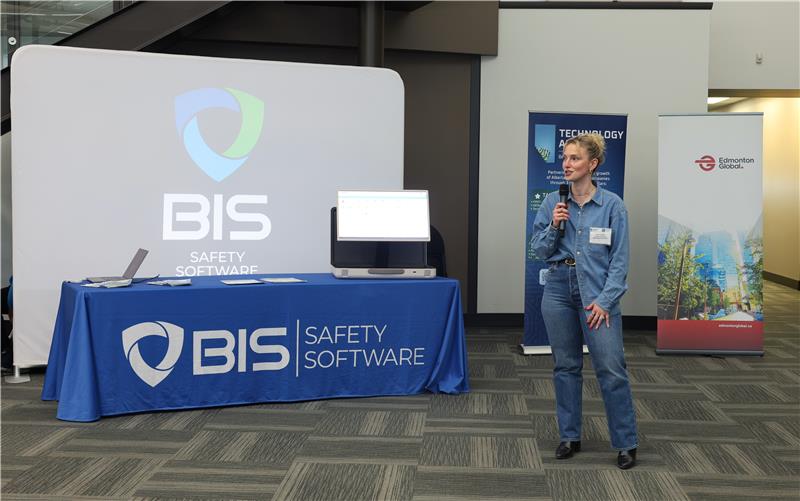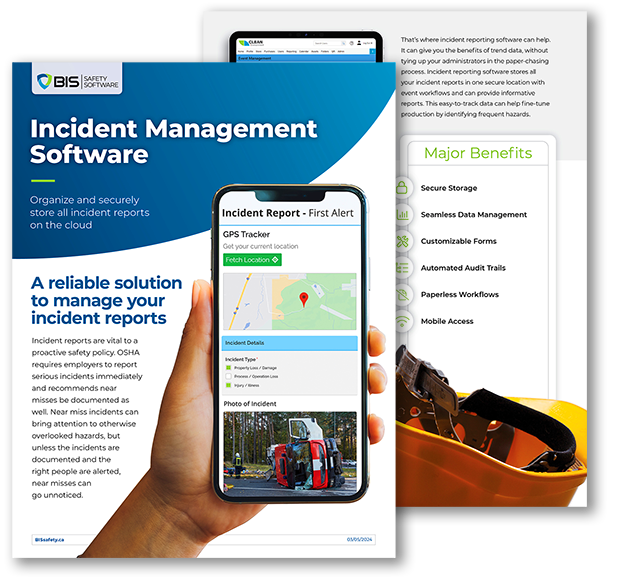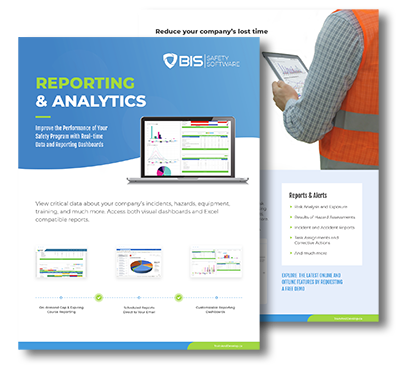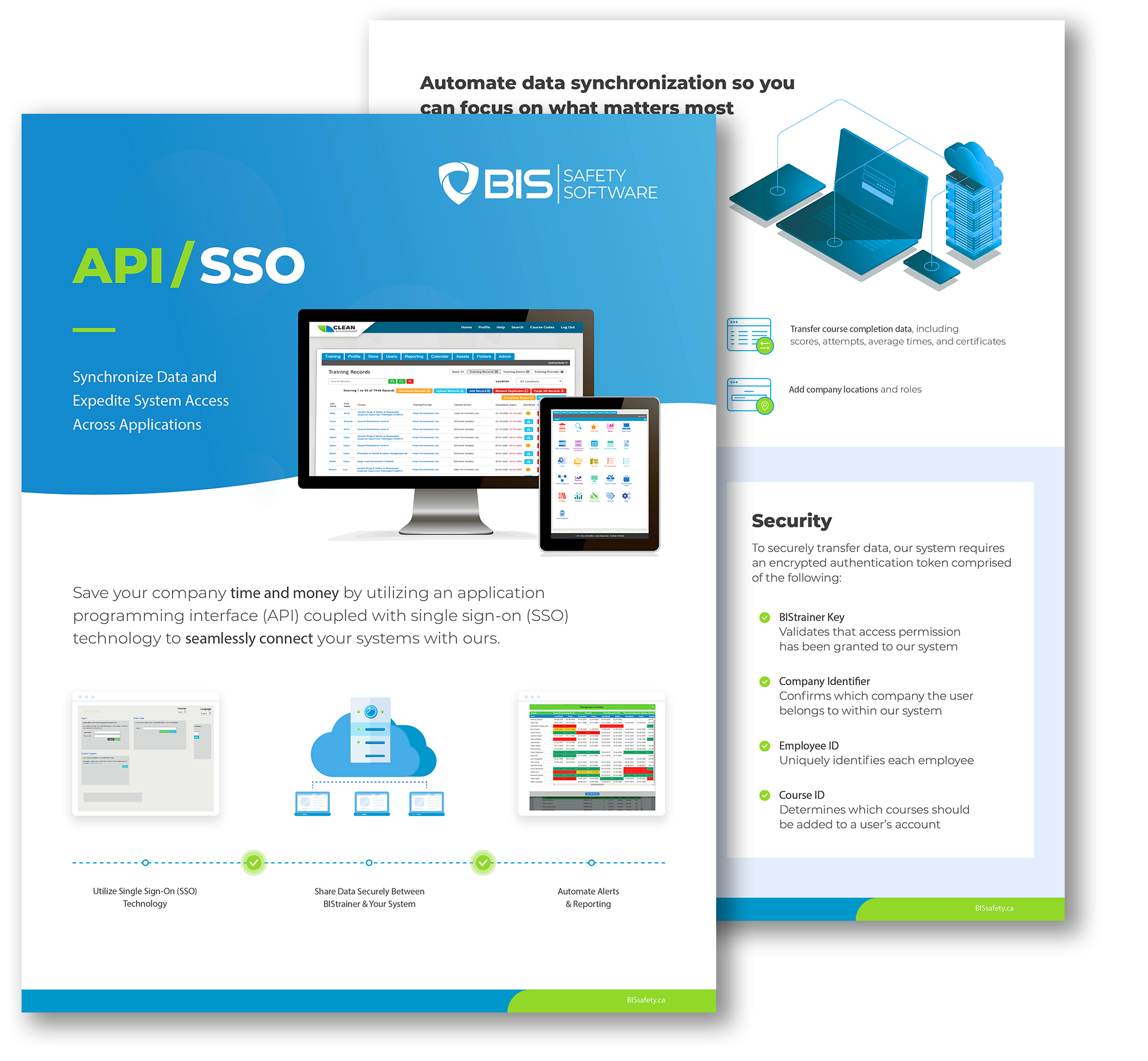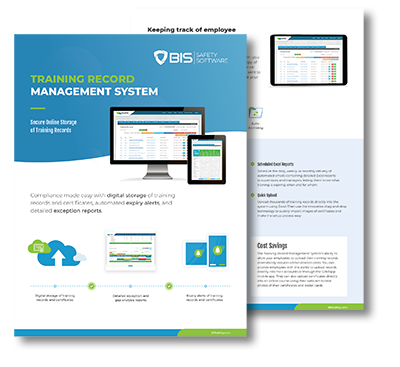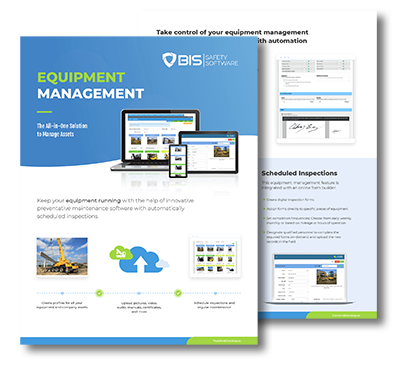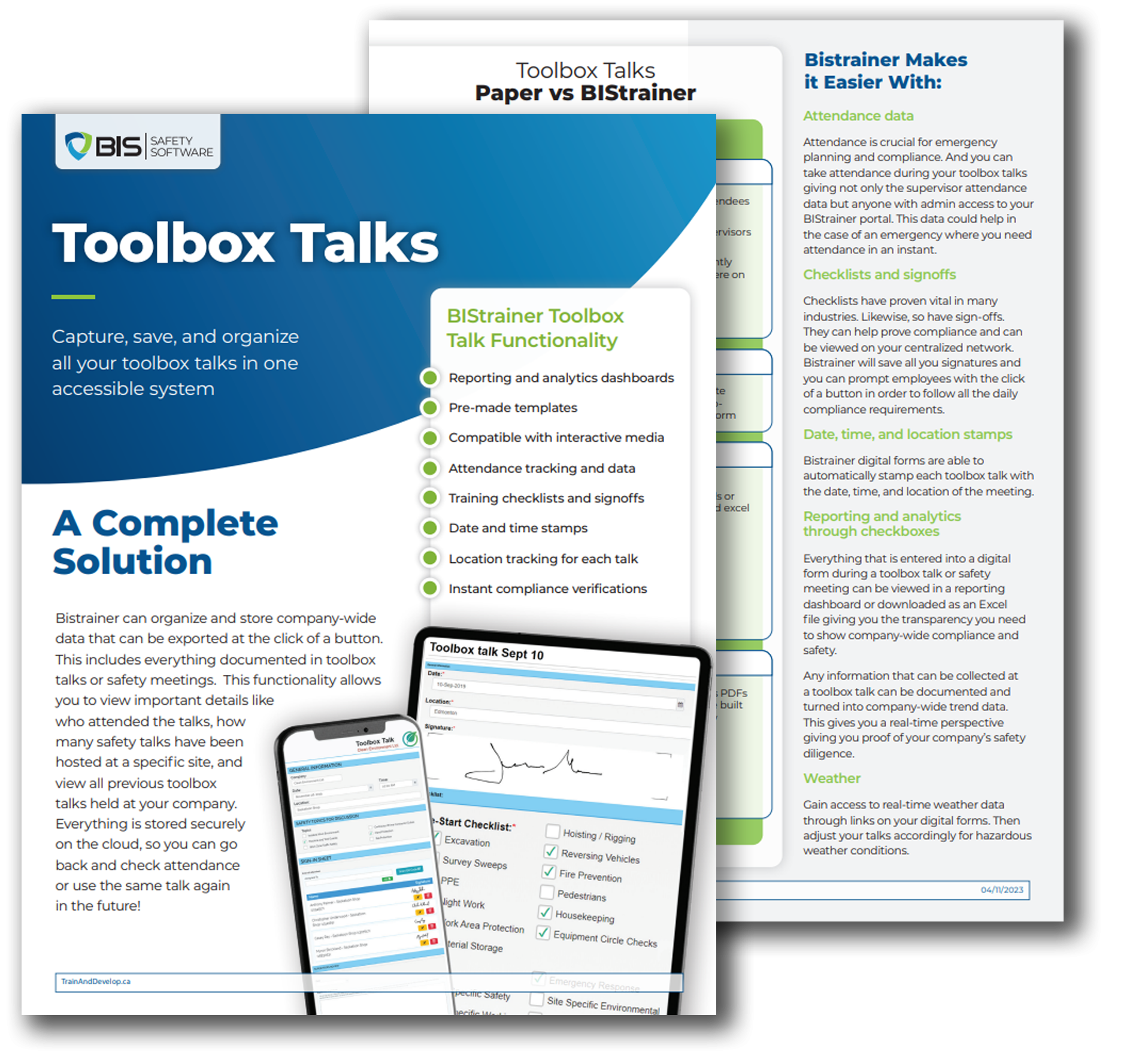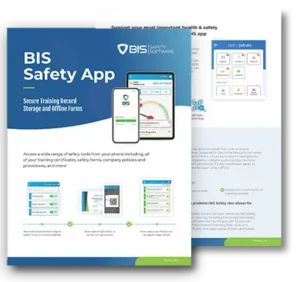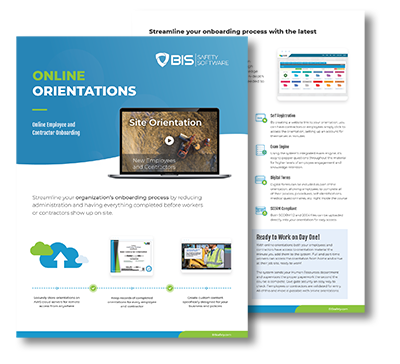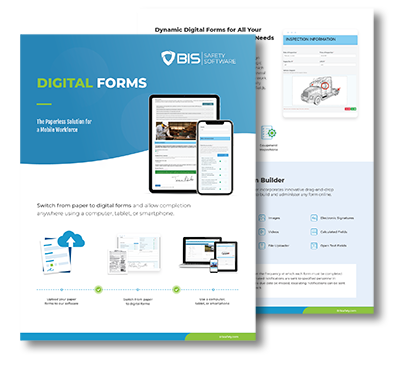
Identifying safety risks is a fundamental step in cultivating a safety-focused culture, the assessment of TRIF is vital for fostering a safer work environment. A low (good) TRIF is a obvious representation of great safety measures, a bad can raise insurance levels and get denied contracts and business.
Explore this Article:
Total Recordable Injury Frequency Formula
The Total Recordable Injury Frequency (TRIF) formula is a simple yet essential metric for measuring workplace safety. It is calculated using the following formula:
The Total Recordable Injury Frequency (TRIF) is calculated using a formula that standardizes the reporting of workplace injuries to compare safety performance across different environments and company sizes.
TRIF = (Number of injuries × 200,000) / Total hours worked<
- Number of injuries: Includes all recordable work-related injuries and illnesses.
- 200,000: Represents the hours worked by 100 full-time employees, assuming a 40-hour week over 50 weeks.
- Total hours worked: The cumulative number of hours worked by all employees during the period being measured.
Example of a TRIF Formula
Here’s an example: For a company with 150 employees recording three injuries last year, the TRIF calculation would be:
(3 x 200,000) / (300,000) = 2
For quarterly calculations, the 200,000 figure is simply adjusted to 50,000, which corresponds to the hours worked by 100 employees in a quarter.

Understanding Why We Track Total Recordable Injury Frequencys:
The primary aim of TRIF is to gauge the effectiveness of a company’s safety measures over the past year and to benchmark against peers in the industry. A high TRIF indicates a need for safety improvements, whereas a low TRIF suggests effective past safety measures. This tracking is particularly critical in high-risk sectors like construction and agriculture.
Advantages and Limitations:
Advantages and limitations of using Total Recordable Injury Frequency (TRIF) metrics can significantly influence how organizations perceive and manage their safety performance:
Advantages:
- Standardized Measurement: TRIF provides a consistent metric that allows businesses across different industries to measure and compare safety performance. This standardization is crucial for benchmarking and understanding relative performance levels.
- Simplicity of Calculation: The formula for TRIF is straightforward, requiring only the number of reported injuries and the total hours worked. This simplicity facilitates easier understanding and implementation within any organization.
- Performance Benchmarking: TRIF enables companies to benchmark their safety records against industry averages or sector-specific standards, which can guide strategic improvements and safety investments.
Limitations:
- Disproportionate Impact on Small Businesses: For smaller companies, a single incident can drastically alter the TRIF, potentially giving a skewed perception of their safety environment. This can lead to unfairly high TRIF scores that might not accurately reflect the company’s overall safety culture.
- Oversimplification of Data: TRIF calculations do not account for the severity or specific nature of injuries, treating minor incidents and major accidents equally. This lack of granularity can obscure deeper safety issues and prevent targeted interventions.
- Potential for Data Manipulation: Some companies might inflate the ‘hours worked’ figure by including low-risk or temporary workers to artificially lower their TRIF. This manipulation undermines the metric’s reliability and can lead to misinformed safety assessments.
- Does Not Predict Future Safety Performance: Relying solely on historical TRIF data can be misleading for predicting future safety outcomes. Past low TRIF scores might encourage complacency, detracting from proactive safety measures and vigilance.
Common Total Recordable Injury Frequencies Per Industry:
While monitoring your company’s Total Recordable Injury Frequency (TRIF) can be valuable for assessing workplace safety, it’s essential to understand its limitations. The TRIF offers a snapshot of the frequency of workplace injuries but may not fully capture the complexity of safety in various industries. Consider some statistics from 2020 regarding sectors in the US with the highest TRIFs:
- Health care/social assistance: 5.5
- Agriculture, forestry, fishing, and hunting: 4.6
- Transportation and warehousing: 4.0
- Retail trade: 3.1
- Construction: 2.5
These figures might raise questions, such as why the construction industry, typically considered highly hazardous, has a lower TRIF than sectors like retail trade or agriculture. The answer lies in the nature of the TRIF calculation. The TRIF metric counts incidents without weighting the severity or potential fatality of injuries. Therefore, industries where fatalities are more common, like construction, may not appear as risky if fatalities are fewer but more severe compared to numerous minor injuries in other sectors.
Moreover, using TRIF to forecast future safety performance can be misleading. A low TRIF is encouraging, suggesting effective safety measures, but it should not lead to complacency. Safety practices must continually evolve and adapt, regardless of past TRIF scores, to mitigate risks and protect workers effectively.

Considerations When Applying TRIF Calculations:
When implementing and interpreting Total Recordable Injury Frequency (TRIF) as a metric for workplace safety, it’s crucial to consider several factors to ensure its effectiveness and reliability. Here are some key considerations:
1. Industry Variability:
- Different industries have varying levels of risk and types of injuries, which TRIF might not fully capture. It’s important to contextualize TRIF scores with industry-specific data to understand the true safety landscape.
2. Severity of Injuries:
- TRIF counts all recordable injuries equally, regardless of their severity. Consider complementing TRIF with other metrics that account for the severity and potential long-term impact of injuries, such as Lost Time Injury Frequency (LTIF) or Severity Rate.
3. Size of the Workforce:
- The size and composition of the workforce can significantly affect TRIF scores. Smaller companies might see more fluctuation in their TRIF due to fewer hours worked and less frequent but significant incidents.
4. Historical Comparison and Trends:
- While TRIF provides a snapshot of safety performance, it’s also useful to track TRIF over time to identify trends, improvements, or deteriorations in safety performance.
- Avoid relying solely on TRIF for predicting future performance. Safety conditions can rapidly change, and past scores may not always be indicative of future risks.
5. Data Integrity:
- Ensure accurate and honest reporting of all incidents and hours worked. Manipulation of data to achieve better TRIF scores can lead to misinformed decisions and potentially unsafe working conditions.
6. Use in Safety Culture:
- TRIF should be one of several tools used to promote a culture of safety. It’s a starting point for discussions and improvements, not an end goal.
- Engage employees in safety training and awareness programs that encourage reporting and proactive management of safety risks.
7. Regulatory and Compliance Aspects:
- Be aware of how TRIF and other safety metrics are viewed by regulatory bodies in your industry. Compliance with industry standards and regulations should always be a priority.
Related Articles
- All Posts
- #EmergencyPreparedness
- 2025 safety trends
- 360 Immersive
- 360immersive
- 6S Safety
- accident prevention
- accidental careers
- accountability
- adjustable workstations
- adult education
- AFAD
- AI automation
- AI implementation
- AI in business
- AI in operations
- AI in Safety
- AI podcast
- AI strategy
- AI transformation
- Airborne Hazards
- Alberta safety
- Alberta safety courses
- Allan James Moore
- Anhydrous Ammonia
- artificial intelligence
- asking for help
- audit findings
- audit readiness
- Audit Reporting
- automation in safety
- automation strategy
- avoidable injuries
- awareness
- Aztec Safety
- back strain
- BambooHR integration
- Bear safety
- behavior-based safety
- Behavioral Safety
- behavioural safety
- biometric sensors
- BIS Podcast
- BIS Safety Podcasts
- BIS Safety Software
- BIS Safety Spotlight
- black holes
- Blame Culture
- Blue Angels
- Boom Lift Safety
- BP Texas City Explosion
- Brave Leadership
- Brett Burkard
- bump test
- burnout
- business automation
- calibration
- call before you dig
- Canadian Compliance
- Canadian OHS
- Canadian safety
- Canadian safety history
- Canadian Safety Regulations
- Canadian safety standards
- Canadian wilderness safety
- carbon monoxide
- Cargo Securement
- Carolynne Heron
- CCOHS
- chemical
- Chemical Safety
- chemical vapors
- chronic injuries
- chronic pain
- cloud-based safety tools
- Coming Soon
- Commercial Drivers
- Commercial Vehicle Safety
- Communication in Safety
- Communication Systems
- community safety programs
- Competency in Safety
- complacency in safety
- Compliance
- compliance courses
- Compliance In Canada
- compliance issues
- Compliance management
- Compliance Reporting
- compliance software
- compliance tools
- compliance tracking
- compliance training
- compliance vs protection
- confined space
- Confined Space Safety
- Construction advocacy
- Construction education
- Construction industry
- construction safety
- construction safety training
- construction technology
- ConstructionSafety
- continuous improvement
- continuous safety improvement
- corporate culture
- corporate training
- corrective actions
- CPR and AED
- crane
- CSA standards
- Customer Spotlight
- Customer Spotlight Kevin Swinden Global Hazmat Safety Culture Hazmat Management Dangerous Goods Competency in Safety Workplace Risk Mitigation BIS Training Clients Canadian EHS
- customized training
- daily trip inspection
- Damage Prevention
- Dangerous Goods
- dangerous goods classification
- Danny Sellers
- data-driven safety
- debriefing
- Decision Analysis
- Decision quality
- defect management
- defect tracking
- defensive driving
- DEI in onboarding
- digital badges
- digital compliance
- digital FLHA
- digital forms
- Digital Hazard Reporting
- Digital Onboarding
- digital safety
- Digital Safety Audits
- digital safety meetings
- Digital Safety Solutions
- Digital safety systems
- digital safety tools
- digital safety transformation
- digital site access
- Digital Training Tools
- digital transformation
- DMS features
- document control
- document management system
- Dr. Joanna Pagonis
- Dr. Tom Krause
- Driver Fatigue
- driver file management
- driver training
- driving instructor program
- DTRMS
- Duty-Time Management
- e-learning
- e-learning tools
- eadership in safety
- early intervention
- education technology
- EHS
- EHS Adoption
- EHS Compliance
- EHS digital solutions
- EHS Inspections
- EHS leadership
- EHS Onboarding
- EHS software
- EHS Strategy
- EHS systems
- EHS technology
- EHS tools
- Einstein
- ELD
- electrical safety
- Elevated Work Safety
- elite performance
- Emergency Action Plan
- emergency preparedness
- emergency procedures
- emergency response
- emergency supplies
- emotional training
- EmpathyInLeadership
- employee behavior
- employee engagement
- employee health
- Employee onboarding
- employee preparedness
- Employee Readiness
- employee safety
- employee training
- employee trust
- Employee Well-Being
- EmployeeEngagement
- Employer Responsibilities
- Energy Isolation
- engaging toolbox meetings
- equipment inspections
- Equipment Operation
- ergonomic consulting
- ergonomic design
- ergonomic risks
- ergonomics
- Evacuation Procedures
- evidence collection
- EWI Works
- excavator safety essentials
- exoskeleton
- exoskeletons
- failure analysis
- fall prevention
- fall protection
- fast onboarding
- field experience
- field level hazard assessments
- field operations
- field safety
- field safety assessments
- field safety communication
- field safety leadership
- field safety services
- Field Safety Technology
- field safety tools
- Field-Friendly Software
- Fire Drills
- fire prevention
- Fire Safety Training
- first aid
- first aid kit
- first week on the job
- first workplace injury
- Fit Testing
- flaggers
- Fleet Compliance
- fleet management
- fleet safety
- FLHA engagement
- FLHA Integration
- FLHA software
- floor mats
- FMEA
- freight
- Frontline Engagement
- frontline safety
- fuel handling
- future of work
- gas detection
- gas monitors
- Gas Respirator Safety
- Gas Safety
- Global Hazmat
- global onboarding
- Good Samaritan laws
- gravitational waves
- gut feeling in safety
- hand injuries
- handling hazardous materials
- hands-on training
- hazard analysis
- hazard assessment compliance
- hazard assessment software
- Hazard Awareness
- hazard communication
- Hazard Control
- Hazard Identification
- hazard prevention
- hazard recognition
- hazard reporting
- hazard reporting technology
- hazard tracking
- Hazardous Energy Control
- Hazardous Materials
- Hazmat Management
- Health & Safety Podcast
- health and safety
- hearing loss prevention
- hearing protection
- heavy equipment operation
- heavy equipment safety
- hidden workplace hazards
- high voltage systems
- High‑performance teams
- HOS Training
- Hours of Service
- HR automation
- HR software
- HR technology
- human factors
- human factors in safety
- human in the loop
- Human Performance
- human vs machine
- human-centered design
- human-centered safety
- Human-Centred Safety
- HumanCenteredLeadership
- Humble leadership
- humor in safety
- hydrogen sulfide
- ICBC certification
- ice melt
- identification
- immersive learning
- Imposter Syndrome
- incident data
- incident investigation
- incident management
- incident prevention
- incident reporting
- inclusive leadership
- industrial AI
- Industrial Hygiene
- industrial safety
- Industrial Training
- influence vs control
- Infrastructure Risk
- injury consequences
- injury prevention
- injury prevention tips
- injury recovery
- injury reporting
- injury response
- injury response plan
- inspections
- instant hazard logging
- instructor development
- internal audits
- international workforce
- interpreting safety data
- invisible dangers
- ISO standards
- Jeff Mulligan
- Jennifer Lastra
- job site accountability
- job site hazards
- job site risks
- job site safety
- jobsite readiness
- Jody Young
- KBR Safety Training
- Kevin Swinden
- labor movement
- ladder safety
- Leadership
- leadership accountability
- leadership and empathy
- Leadership by example
- Leadership Development
- Leadership in Safety
- Leadership Management
- leadership messaging
- Leadership trust
- LeadershipDevelopment
- Lean Manufacturing
- Lean Workplace
- learning from incidents
- learning management
- lifting techniques
- lighting
- LIGO
- Linda Miller
- LMS
- LMS features
- LMS software
- Load Securement
- Lock Out Tag Out
- lockout tagout
- Lone Worker Safety
- lone workers
- LOTO
- LOTO Training
- machine learning
- Machine Safety
- Maintenance Safety
- mental health at work
- MEWP Training
- MI Safety
- microlearning
- Mike Schwartz
- minor injuries
- mobile FLHA solution
- mobile onboarding
- Mobile Safety Apps
- Mobile Safety Platforms
- mobile safety reporting
- Mobile Safety Tools
- mobile safety tools safety compliance solutions
- MOU Standards
- mould hazards
- mould prevention
- movement in workplace
- Multi-Contractor Worksites
- multilingual training
- MyZone AI
- Near Miss Reporting
- new hire experience
- New Hire Safety
- New Worker Training
- new workers
- no-blame investigations
- noise exposure
- nonconformance
- Northern BC
- NRCA
- NSC Standard 13
- occupational fatigue
- occupational hazards
- occupational health
- Occupational Health and Safety
- Occupational Health and Safety (OHS)
- occupational health risks
- occupational safety
- occupational therapy
- OH&S
- OHS
- OHS Compliance
- OHSA
- oil and gas safety
- omni-training
- On-Site Safety
- onboarding Canada
- onboarding safety
- Onboarding Software
- online learning
- online orientation software
- Online safety training
- operational efficiency
- Operational Excellence
- Operational risk
- organizational culture
- organizational safety
- OSHA compliance
- OSHA standards
- outdated practices
- Outdoor work hazards
- overconfidence
- overhead crane courses
- pain awareness
- paperless safety reporting
- paperless safety talks
- personal protective equipment
- Pharmaceutical Safety
- physics careers
- pipeline safety
- playbook software
- podcast
- post-accident review
- post-incident protocol
- PPE
- PPE enforcement
- PPE improvement
- PPE Training
- pre-trip inspection
- predictive analytics
- pretrip inspection
- preventing shortcuts
- preventive action
- proactive risk management
- proactive safety
- proactive safety culture
- proactive safety measures.
- Proactive Safety Systems
- process improvement
- Professional development
- propane safety
- propane storage
- protective clothing
- psychological hazards
- psychological safety
- PsychologicalSafety
- quality control
- quality management
- quality standard
- Real Safety Leadership
- real-time hazard reporting
- Real-Time Reporting
- real-time safety
- real-time safety tools
- real-time site data
- recordkeeping
- reduce training costs
- regulatory updates
- repetition in safety
- repetitive motion injuries
- respirator safety
- respirators
- Respiratory Protection
- risk assessment
- risk management
- risk mitigation
- risk prevention
- Risk Prevention Tools
- risk reduction
- road safety
- Robin Postnikoff
- ROI with AI
- root cause analysis
- root cause correction
- routine task risks
- safe excavation
- safe habits
- safe transport
- safe work habits
- safe work practices
- safety
- safety accountability
- safety advice
- safety article
- Safety Audit Software
- safety automation
- safety awareness
- Safety Behaviour
- safety behaviour science
- safety best practices
- safety communication
- safety compliance
- Safety Conversations
- safety culture
- safety culture transformation
- safety data
- safety data sheets
- safety documentation
- safety engagement
- safety follow-up
- safety gear
- safety gloves
- safety goggles
- safety habits
- safety improvement
- safety incentives
- safety innovation
- safety insights
- safety inspection
- safety instinct
- Safety Leaders
- safety leadership
- Safety Leadership Podcast
- safety legislation
- safety lessons
- safety management
- safety management system
- safety management systems
- safety metrics
- safety mindset
- safety motivation.
- safety myths
- safety onboarding
- safety planning
- safety podcast
- safety procedure updates
- Safety Procedures
- safety process improvement
- safety professionals
- safety reporting
- safety review process
- safety shortcuts
- safety software
- Safety Spotlight
- Safety strategy
- safety systems
- safety technology
- safety theater
- safety tips
- safety tools
- safety training
- safety transformation
- safety transparency
- SafetyCulture
- SafetyLeadership
- Sarah Anderson
- scaffold safety
- scaffolding inspections
- scalable training solutions
- Scott Lyall
- SDS
- shipping documentation
- silent dangers
- silica dust
- Sinogap Solutions
- slips trips falls
- slow-building hazards
- smart helmets
- smart PPE
- smart safety systems
- smart safety tools
- Social Learning
- SOPs
- space science
- speak-up culture
- Spencer McDonald
- Standardized Work
- stop work authority
- storytelling and safety
- storytelling in safety
- supervisor training
- system safety
- Systems Thinking in Safety
- tablet-based toolbox talks
- TCP safety
- TDG
- team communication
- team performance
- teamwork
- tech and ergonomics
- tech in safety
- tech-enabled learning
- Thinking Driver
- Titan Environmental
- Tom Krause
- toolbox talks tablets
- Total Recordable Injury Formula
- tough guy mentality
- toxic air
- traction control
- traffic control
- traffic control plan
- training
- training courses
- Training integration
- training management
- training matrix
- training record management
- training records
- training software
- TrainingAndDevelopment
- transportation
- transportation of dangerous goods
- Transportation Regulations
- Transportation Safety
- Trucking Regulations
- trust
- Trust & Accountability
- Trust & Communication
- Trust and Accountability
- trust at work
- Underground infrastructure
- underground utilities
- unseen workplace threats
- Upward communication
- user experience
- utility line marking
- utility locating
- Utility safety
- Utility Safety Partners
- values-based onboarding
- vehicle safety
- version control
- veteran advice
- Virtual Reality
- VR safety training
- VR Technology
- walkway maintenance
- wearable technology
- Weights and Dimensions
- WHMIS
- Wildlife awareness
- winter safety
- witness statements
- women in leadership
- work zone safety
- work-alone training
- work-related injuries
- worker accountability
- worker advocacy
- worker fatigue
- worker protection
- worker safety
- worker safety habits
- worker safety tips
- worker trust
- worker wellbeing
- workers' rights
- Workforce Automation
- workforce compliance
- Workforce development
- workforce engagement
- workforce management
- Workforce Readiness
- workforce training
- Working Alone Canada
- workplace accidents
- workplace air quality
- workplace best practices
- workplace certification
- workplace compliance
- Workplace Culture
- workplace hazard prevention
- Workplace Hazard Tracking
- workplace hazards
- workplace health
- workplace incident response
- workplace injuries
- workplace injury prevention
- workplace inspections
- workplace leadership
- workplace mindset
- Workplace Organization
- workplace readiness
- workplace risk factors
- workplace risk management
- Workplace Risk Mitigation
- Workplace safety
- Workplace Safety Compliance
- workplace safety culture
- Workplace Safety Leadership
- workplace safety rules
- workplace safety tech
- workplace safety tips
- Workplace Safety Tools
- workplace safety training
- workplace stress
- workplace tiredness
- workplace trust
- workplace wellness
- WorkplaceSafety
- WSPS

Erin leads with empathy, communication, and genuine connection, focusing on what workers experience every day. By building trust, encouraging open...

Melanie McGrath shifts workplace safety from policy and checklists to a people-led safety leadership culture rooted in trust, ethical leadership,...

Ethan Winder’s approach to safety leadership goes beyond rules, he focuses on communication, trust, and understanding the real work people...







